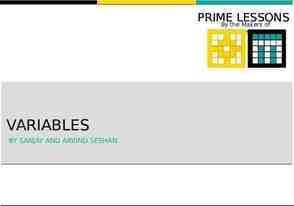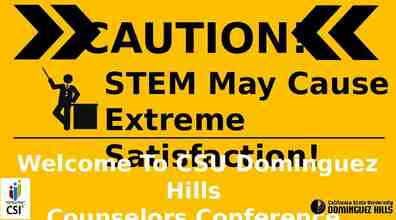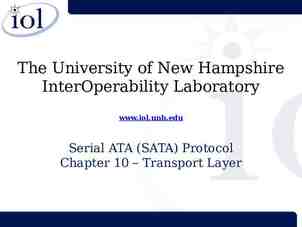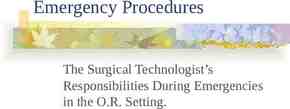Mandated Reporter Training Protective Services 2019 Product of the
30 Slides163.26 KB

Mandated Reporter Training Protective Services 2019 Product of the Office of Child Welfare Policy and Programs 1

State Laws Child Protection Law, 1975 PA 238 The Michigan Child Protection Law, 1975 PA 238, requires the reporting of suspected child abuse and neglect by mandated reporters, and encourages the reporting of suspected child abuse and neglect by all persons. Michigan’s Public Act 519-MCL 400.11 Michigan’s Public Act 519-MCL 400.11 creates a legal duty to report to Adult Protective Services upon reasonable suspicion that a vulnerable adult is being abused, neglected or exploited. If a mandated reporter has reason to suspect that an adult is abused, neglected, or exploited, the mandated reporter shall make an oral report to Adult Protective Services. Product of the Office of Child Welfare Policy and Programs 2

State Law Legal Definition of Child Abuse Harm or threatened harm to a child’s health or welfare that occurs: By non-accidental physical or mental injury, sexual abuse, sexual exploitation or maltreatment To a child under 18 years of age By the child’s parent, legal guardian, or other person who is responsible for the child’s health or welfare Product of the Office of Child Welfare Policy and Programs 3

State Law Legal Definition of Child Neglect Harm or threatened harm to a child’s health or welfare that occurs through: Negligent treatment, including the failure to provide adequate food, clothing, shelter, or medical care Placing the child at an unreasonable risk by the parent, legal guardian, or other person responsible for the child’s health or welfare Product of the Office of Child Welfare Policy and Programs 4

State Law Legal Definition of Vulnerable Adult Vulnerable Adult: An individual age 18 or over whom because of a mental or physical impairment or because of advanced age/frailty, is unable to protect himself or herself from abuse, neglect and/or exploitation. Product of the Office of Child Welfare Policy and Programs 5

State Law Legal Definition of Adult Abuse, Neglect or Exploitation Abuse: Harm or threatened harm to an adult's health or welfare caused by another person. Abuse may be physical, sexual or emotional. Neglect: Harm to an adult's health or welfare caused by the inability of the adult to respond to a harmful situation (self-neglect) or the conduct of a person who assumes responsibility for a significant aspect of the adult's health or welfare. Exploitation: Misuse of an adult's funds, property, or personal dignity by another person Product of the Office of Child Welfare Policy and Programs 6

Mandated Reporters People in the following professional roles are required to report any suspected vulnerable adult or child abuse, neglect or exploitation: Medical and Mental Health Care Services Social Welfare Services Adult and Childcare Services Clergy and faith Services Law enforcement Educational Services Other human Services Product of the Office of Child Welfare Policy and Programs 7

Report or Don’t Report? You don’t need evidence. Reasonable suspicion that vulnerable adult or child abuse or neglect occurred is sufficient. Note: Never investigate on your own. “When in doubt, report it out.” Product of the Office of Child Welfare Policy and Programs 8

Reporting Concerns “I don’t want to interfere in someone’s family.” You may be the only person to intervene and ensure an individuals safety. “They will know it was me who called.” PS cannot provide this information without your permission or a court order. “What I have to say won’t make a difference.” You may never know the difference you will make. Do the right thing anyway. Product of the Office of Child Welfare Policy and Programs 9

Reporting Obligations Immediate report to MDHHS-Adult or Child 855-444-3911 Be prepared to give as much demographic information as possible Providing the family’s address is essential Provide detailed information including statements in quotations Michigan Online Reporting System (MORS)-Child State of Michigan employees: MiLogin Outside entities: Michigan.gov/mandatedreporter Additional resources: Michigan.gov/mandatedreporter Written report (DHS-3200) within 72 hours-Child Do not send a DHS-3200 if utilizing Michigan Online Reporting System Notify the head of your organization if required by your employer Product of the Office of Child Welfare Policy and Programs 10

State Law Penalties for Not Reporting Criminal penalties 93 days in jail, or Not more than 500 fine, or Both Civil penalty Liable for injuries Liable for future loss/damages Product of the Office of Child Welfare Policy and Programs 11

State Law Protections for Reporters Immunity Protection Good faith Confidentiality Protection Disclosure with consent Judicial order Product of the Office of Child Welfare Policy and Programs 12

Detailed Reporting Requirements Child Protection Law requires a detailed report: “The report shall contain other information available to the reporting person that might establish the cause of the child abuse or child neglect, and the manner in which the child abuse or child neglect occurred.” “If the immediate report has been made using the online reporting system and that report includes the information required in a written report under subsection (2), that report is considered a written report for the purposes of this section and no additional written report is required.” This “other information available to the reporting person” includes details known about the child, family and the specific situation. Please explain the who, what, where, when, why and how of this matter. Product of the Office of Child Welfare Policy and Programs 13

Provide All Known Information Insufficient Information: “Johnny had a bruise on his elbow.” Additional information was known but not reported. Based on the information, Centralized Intake could not make an informed screening decision. Report the who, what, why, when, where, and how. Sufficient Information “On 05/01/2019, Johnny reported his mother hit him four times on the right elbow with a wooden spoon. The incident happened in Johnny’s bedroom. On 05/02/2019, Johnny had a large, circular, dark purple bruise on his inner right elbow. Johnny is afraid to go home because he fears being hit.” Product of the Office of Child Welfare Policy and Programs 14

What To Do and What Not To Do When An Individual Discloses Abuse or Neglect Move the individual to a private area Maintain eye contact Use a soothing and supportive stance and tone Do not display any signs of shock Do not display signs of disapproval Do not interview, ask only enough to make report Ask open ended questions (“how” and “what”) After speaking with the individual, take detailed notes about the conversation Product of the Office of Child Welfare Policy and Programs 15

Reporting Centralized Intake Specialist Centralized Intake will gather the following from the reporter: Name of the Individual, parents and/or legal guardians Description of suspected abuse or neglect Any information that might establish the cause of suspected abuse or neglect Who, what, when, where, why and how Your contact information Product of the Office of Child Welfare Policy and Programs 16

Reporting Next Steps for PS Complaint will be reviewed for assignment If assigned, a caseworker begins an investigation within 24 hours and a decision is made within 30 days Services may be offered to the family/individual Protecting interventions may be necessary, including court ordered removal (last resort – only if necessary) Protective Services will keep your information confidential Per law, your identifying information will not be shared unless court ordered or if consent is given. Product of the Office of Child Welfare Policy and Programs 17

What is NOT investigated? Issues solely attributed to poverty or homelessness Head lice Educational concerns Sibling on sibling abuse – unless parent(s) know and fail to take action to protect Product of the Office of Child Welfare Policy and Programs 18

Recognizing Types of Abuse and Neglect Physical abuse Sexual abuse Mental injury Neglect Maltreatment Other Product of the Office of Child Welfare Policy and Programs 19

Recognizing Physical Abuse Physical abuse is a non-accidental injury. Physical indicators may include: Bruises Burns Broken bones Slap, Grab or Knuckle marks Injuries to ears and scalp Loop marks in the shape of the object used Female Genital Mutilation Other unexplained injuries or illness (Medical Abuse) Product of the Office of Child Welfare Policy and Programs 20

Recognizing Sexual Abuse or Sexual Exploitation Any intentional touching/contact that can be reasonably construed as being for the purpose of arousal, gratification or any other improper purpose by the perpetrator Sexual penetration (any intrusion, however slight) Accosting, soliciting or enticing to commit, or attempt to commit an act of sexual contact or penetration, including prostitution Product of the Office of Child Welfare Policy and Programs 21

Recognizing Sexual Abuse Indicators: Physical evidence Running away Pregnancy or contracting a venereal disease Acts secretive and isolated Inappropriate sexualized behavior Self-reports sexual abuse Product of the Office of Child Welfare Policy and Programs 22

Recognizing Mental Injury An existing pattern of physical or verbal acts and omissions that result in a psychological or emotional injury Indicators: Exhibits extremes in behavior (overly compliant or demanding, extremely passive or aggressive) Is inappropriately child-like or inappropriately infantile Exhibits physical or emotional developmental delays Has attempted suicide Self-reports abuse Product of the Office of Child Welfare Policy and Programs 23

Recognizing Neglect Types of Neglect: Physical neglect Failure to protect Improper supervision Abandonment Medical neglect Product of the Office of Child Welfare Policy and Programs 24

Recognizing Neglect Indicators: Frequent absence from school Steals or begs for food or money Suffers from chronic dental and/or medical issues Lacks sufficient clothing for weather Self-reports no one is home Product of the Office of Child Welfare Policy and Programs 25

Recognizing Maltreatment Child maltreatment is defined as the treatment of a child that involves cruelty or suffering that a reasonable person would recognize as excessive. Indicators: Humiliation Treat child like an animal Inappropriate child capability expectations Product of the Office of Child Welfare Policy and Programs 26

Substance Use Concerns When a parent/caregiver is using/abusing legal or illegal substances, CPS complaint assignment occurs if: Evidence exists a child was exposed to a legal/illegal substance. Confirmation by a medical professional of withdrawal symptoms in a newborn that are not the result of medical treatment. It is alleged the parent’s use/abuse of a legal/illegal substance affects their ability to safely care for a child. Substance Exposed Newborns: CPS complaints will be rejected when it is alleged the newborn’s positive test or symptoms are a result of medical treatment prescribed and/or administered to the parent or the newborn (including medication assisted treatment for opioid use disorder). Product of the Office of Child Welfare Policy and Programs 27

Human Trafficking Sex trafficking - a person recruited, enticed, harbored, transported, provided, or obtained for the purposes of a commercial sex act, sexually explicit performance, or the production of pornography. Labor Trafficking - a person recruited, enticed, harbored, transported, provided, or obtained for the purposes of labor or services. Labor trafficking can include domestic servitude, forced labor in restaurants or salons, forced agricultural labor, or debt bondage. Product of the Office of Child Welfare Policy and Programs 28

Human Trafficking Indicators Sexually transmitted diseases Symptoms of post-traumatic stress Malnourished and/or always hungry Signs of physical and/or sexual abuse, physical restraint, confinement or torture Victims and perpetrators are often skilled at concealing their situations Live with other unrelated youth and with unrelated adults Not in control of their own identification documents Product of the Office of Child Welfare Policy and Programs 29

Additional Information Mandated Reporter resources are available online at: www.Michigan.gov/mandatedreporter Centralized intake: 855-444-3911 Product of the Office of Child Welfare Policy and Programs 30






